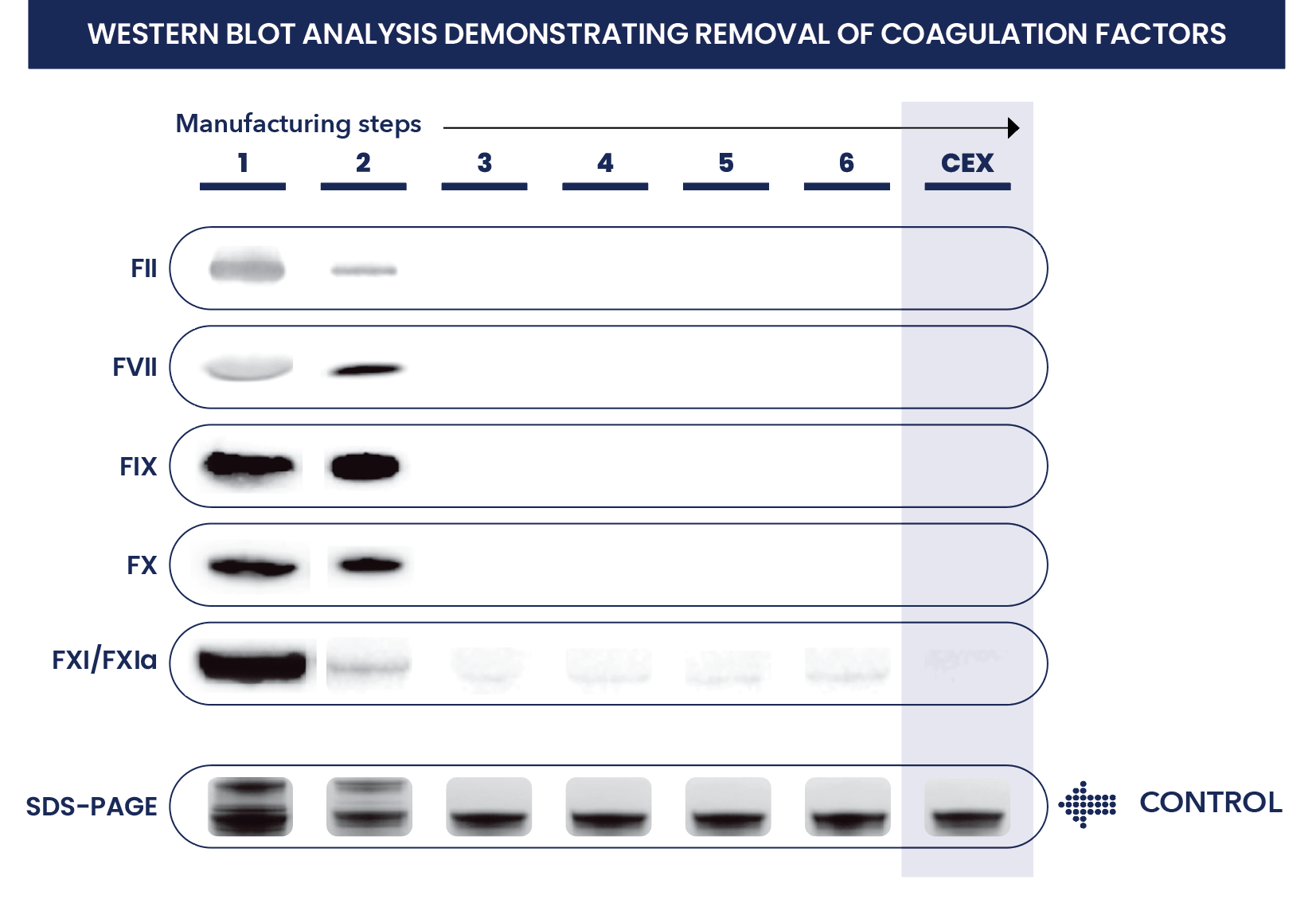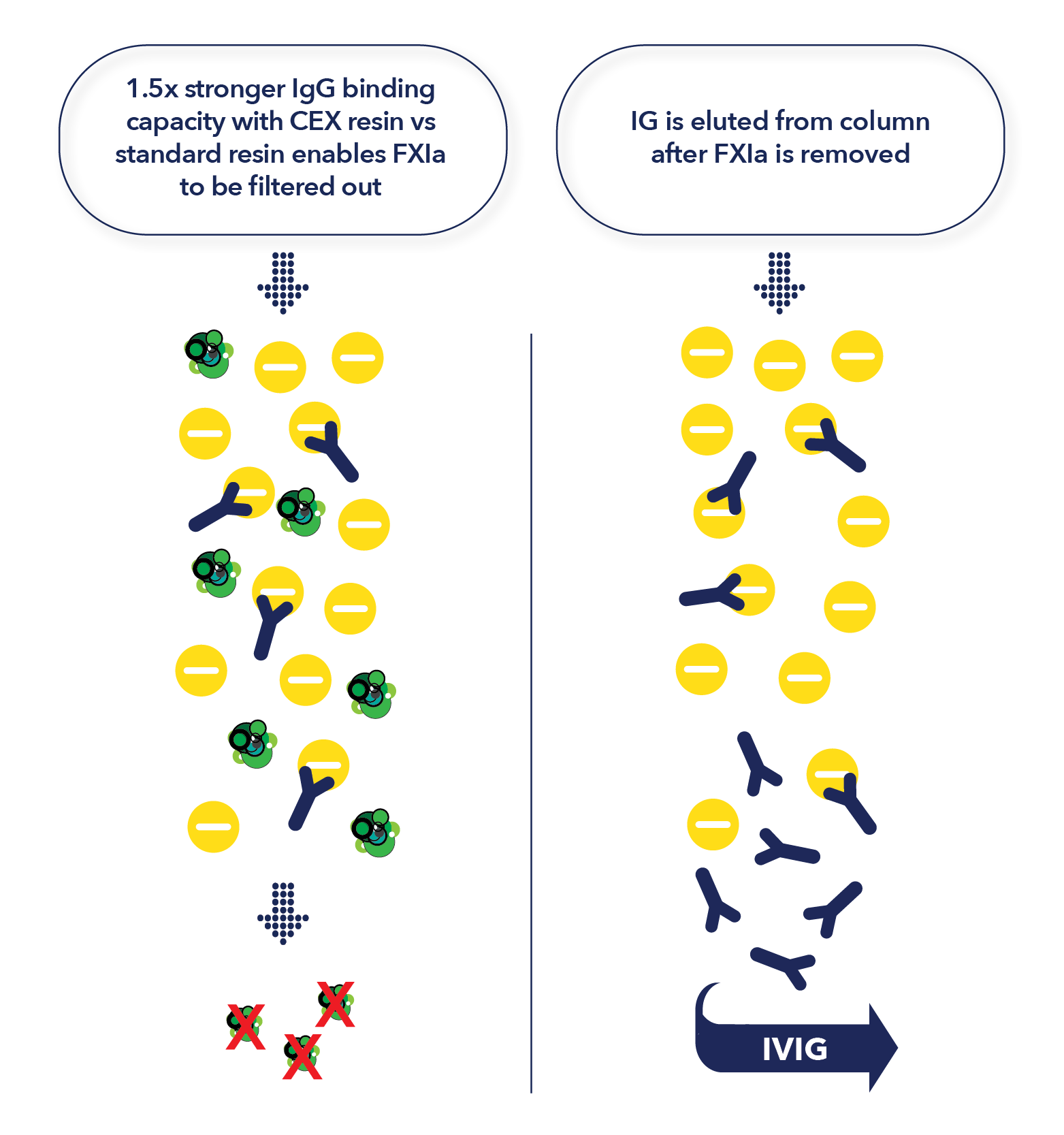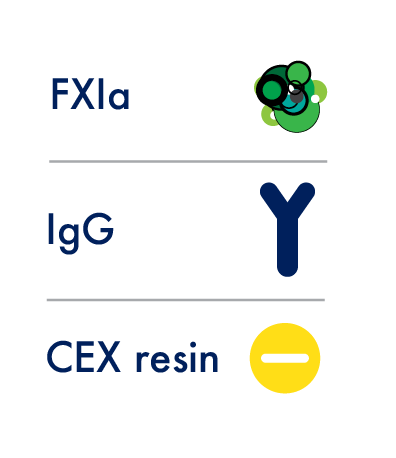
Great Chemistry.
Manufacturing processes of immunoglobulin preparations may differ, resulting in differences in the final product composition. Safety of immunoglobulin administration is GC Biopharma's primary goal for our formulation.
A longstanding goal within the immunoglobulin (IG) industry has been to remove coagulation factor XIa (FXIa), a plasma-based protein linked to IVIG-related thromboembolic events.
An extra step in our process dedicated to the removal of FXIa
- Our manufacturing process includes multiple steps, such as Cohn-Oncley, cold-ethanol fractionation, viral inactivation, and nanofiltration
- We implemented an extra step in our manufacturing process using CEX chromatography specifically to address the need to remove FXIa
- An in depth study was designed to evaluate GC Biopharma's manufacturing process and it's capacity to remove FXIa
- The study demonstrated that CEX chromatography effectively removed >99% of FXIa
The CEX chromatography difference
- Coagulation factors (FII, FVII, FIX, FX, and FXIa) remaining in IVIG products at high concentrations can potentially cause thromboembolic events. FXIa is known to play an important role in causing thrombosis with IVIG
- Ethanol precipitation can effectively remove coagulant factors FII, FVII, FIX, and FX but FXIa can remain in intermediary products
- Western blot and ELISA analyses demonstrated that residual FXIa remained in the intermediate manufacturing product until after CEX chromatography, when it was reduced to undetectable limits

How CEX Chromatography works
- Human IG has an isoelectric point ranging from 6.4 to 9.0, while the isoelectric point for FXIa ranges from 8.9 to 9.1
- Because of this similarity, it can be difficult to separate FXIa from Ig preparations using ethanol precipitation alone
- CEX chromatography uses ceramic-based resin (CM Ceramic Hyper D Sorbent, Pall Lifescience) which has a 1.5 times higher binding capacity compared to commonly used resin in protein purification
- The CEX resin binds to the IG, effectively separating it from other components, allowing FXIa to be reduced to undetectable limits


Tested and proven to reduce FXIa to undetectable levels.
- A spiking study was designed to evaluate the manufacturing process of GC Biopharma's IVIG for its capacity to remove coagulation FXIa
- In the study, IVIG samples were spiked with large quantities of FXIa (32-fold and 158-fold) before the CEX chromatography step in manufacturing
- FXIa levels were measured after CEX chromatography using an enzyme-linked immunosorbent assay

The spiking study demonstrated that CEX chromatography removed >99% of FXIa protein and reduced FXI activity to below detection limits, even in samples containing FXIa levels 158x greater than what you would normally see.
Reference: Kang GB, Huber A, Lee J, et al. Cation exchange chromatography removes FXIa from a 10% intravenous immunoglobulin preparation. Front Cardiovasc Med. 2023;10:1253177.